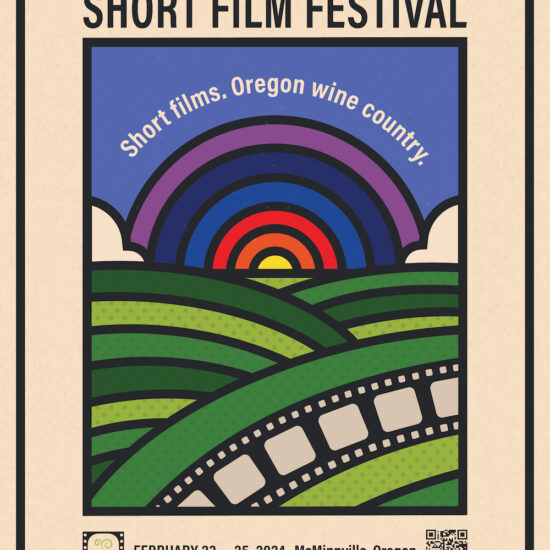
In the vast digital cinematic landscape, where aspiring filmmakers are constantly vying for attention and recognition, having a well-constructed website is crucial. Your website is not just a digital calling card but also a powerful tool for showcasing your work, connecting with your audience, and advancing your film career!
However, even the most stunning website won’t yield results if it doesn’t attract traffic. This is where the art of navigation comes into play. In this guide, you’ll learn how you can amplify your film career website’s traffic by using several proven tips and tricks in the digital marketing world.
The Digital Cinematic Landscape
Before navigating the intricacies of website traffic, it’s essential to understand the digital cinematic landscape and its significance to a filmmaker. Today, filmmakers and scriptwriters have transcended the boundaries of conventional cinema. They now wear multiple hats, functioning as storytellers, content creators, and adept digital marketers.
The online landscape has played a pivotal role in democratizing the art of filmmaking, rendering it accessible even to fledgling filmmakers, and enabling them to connect with a worldwide audience! Your online footprint, with a special emphasis on your website, emerges as the pivotal avenue through which you interact with the global community.
The Role of Your Website
Your website is your online portfolio and the hub of your digital identity. It’s where you showcase your past work, share your vision, engage with your audience, and establish your brand as a filmmaker. It’s not just a static webpage but a dynamic platform that should evolve alongside your career. To ensure your website serves its purpose effectively, it needs regular traffic.
The Importance of Website Traffic
The importance of website traffic extends beyond mere statistics; it revolves around connecting with the ideal audience. When your website attracts visitors who possess a genuine interest in your work, it can usher in a multitude of benefits, including:
Recognition and Exposure
Increased traffic means more people see your work. This can lead to increased recognition in the film industry and more opportunities for collaboration or funding.
Audience Engagement
Traffic can help you build a dedicated fan base. Engaging with your audience through your website, social media, or newsletters can foster a loyal following. You can even use tools like WordPress forms to drive audience engagement by providing interactive content. Interactive elements like surveys, quizzes, and contact forms can make your site more appealing, encouraging visitors to spend more time on your site.
Networking Opportunities
As your website gains traction, you may receive inquiries from fellow filmmakers, producers, or industry professionals interested in your work.
Revenue Generation
For many filmmakers, websites can become a source of income through advertising, merchandise sales, or paid content.
The SEM Approach
Search Engine Marketing (SEM) is a powerful strategy for driving traffic to your film career website. It involves paid advertising to ensure your website appears prominently in search engine results pages (SERPs) when users search for relevant keywords. Here’s how you can use SEM effectively:
Keyword Research
Start by identifying keywords that are relevant to your work as a filmmaker. Use keyword research tools to find out what terms your target audience is searching for. Incorporate these keywords strategically into your website’s content, including blog posts, project descriptions, and meta tags.
Google Ads
Google Ads is a leading SEM platform. Create compelling ad campaigns targeting your chosen keywords. Craft engaging ad copy and set a budget that suits your needs. Google Ads offers various ad formats, including text ads, display ads, and video ads, allowing you to showcase your work creatively.
Landing Pages
When users click on your ads, they should land on relevant and well-designed pages on your website. These landing pages should provide valuable information and encourage users to take specific actions, such as signing up for your newsletter or viewing your film trailers.
Monitoring and Optimization
SEM is an ongoing process. Consistently oversee the effectiveness of your advertising initiatives and your website traffic by employing analytical tools such as Google Analytics. Adapt your campaigns in response to what proves successful and what doesn’t yield the desired results. Experiment with different keywords, ad copy, and landing page designs to optimize your results.
Budget Management
Establish a budget that aligns with your objectives and available resources. Search Engine Marketing (SEM) provides the flexibility to begin with modest investments and gradually expand as you receive favorable outcomes. Be sure to be mindful of your expenditures and prioritize maximizing your return on investment (ROI).
Local SEO
Don’t forget about local SEO if you’re targeting a specific geographic area. Ensure your website is optimized for local search by including location-specific keywords and creating Google My Business listings.
Beyond SEM: Additional Traffic Strategies
While SEM is a powerful tool, it’s not the only strategy to amplify your website’s traffic. Here are some additional tips:
1. High-Quality Content
Produce compelling, high-quality content that resonates with your target audience. This can include blog posts, videos, behind-the-scenes content, and interviews. Consistency in content creation is key.
2. Social Media Engagement
Leverage social media platforms to promote your website and engage with your audience. Share your work, interact with followers, and participate in conversations related to your niche.
3. Email Marketing
Build an email list of interested followers and send regular newsletters with updates on your projects, exclusive content, and promotions. Email marketing can foster a sense of community and loyalty.
4. Collaborations and Networking
Collaborate with other filmmakers, industry influencers, and websites related to your niche. Guest posting, podcast appearances, and joint projects can expose your website to new audiences.
5. User Experience (UX) Optimization
Ensure your website is user-friendly, mobile-responsive, and loads quickly. A positive user experience can keep visitors engaged and encourage them to explore your site further.
6. Search Engine Optimization (SEO)
In addition to SEM, invest in organic SEO efforts. This involves optimizing your website’s structure, content, and meta tags to improve its ranking in organic search results.
Final Word
As a filmmaker, navigating the complex landscape of the digital cinematic world demands a comprehensive approach. Your website acts as the doorway to your success, with web traffic serving as the pivotal element in realizing its full potential.
Building and sustaining website traffic requires dedication, creativity, and adaptability. As you refine your website and traffic-building strategies, you’ll find that your online presence as a filmmaker can become a powerful force in your career, opening doors to exciting opportunities and helping you make your mark in the dynamic world of digital cinema!
Chatty is a freelance writer from Manila. She finds joy in inspiring and educating others through writing. That’s why aside from her job as a language evaluator for local and international students, she spends her leisure time writing about various topics such as lifestyle, technology, and business.














